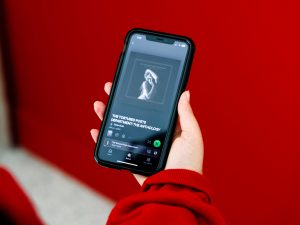As NASA’s latest space mission gets ready to land on Mars next week, Brock University researcher Mariek Schmidt will be getting down to work in California.
Schmidt is part of a team of about 200 international scientists and engineers who will help direct the rover vehicle Curiosity in its search for signs of life after it touches down Aug. 6.
“If we find evidence for past life, it would be the biggest discovery this thing could make, but I can’t say that’s going to happen,” said Schmidt, a geochemist in Brock’s Earth Sciences department. “That’s really the goal in Mars research now, is if life could have happened there.”
Schmidt, whose participation in the mission is funded by the Canadian Space Agency, will be one of three Canadians on the research team in Pasadena. She will work with other geochemists and mineralogists, studying rocks in the red planet’s Gale Crater to try to understand the conditions that existed when sediment and rocks were formed and those that may have altered sediment and rocks over time, such as fluids flowing through them or exposure to the Martian environment.
Schmidt’s team will also direct where Curiosity ventures inside the crater, home to Mount Sharp, a six-kilometre high mountain whose discernable sedimentary layers could provide insight into Martian history and whether life could have been sustained there.
The Curiosity Rover
Curiosity – NASA’s most advanced mobile robotic laboratory – will use a digital camera to photograph mid- and long-range shots in the crater and a microscopic imager to give a clearer picture of the texture of rocks.
A tool called an alpha particle X-ray spectrometer, contributed to the mission by the Canadian Space Agency, will help determine the composition of rocks Curiosity finds.
A documentary about the mission will air on Discovery Channel Canada on Aug. 6 at 7 p.m. It’s called Mars Landing 2012: The New Search for Life and features interviews with Schmidt about the work ahead.
But she explained analyzing what Curiosity finds is an imperfect science, because the minds studying the data are so far away – about 150 million miles – from the source.
“Even if you take loads and loads of pictures of things, you’re limited. You only get what you ask it to do,” Schmidt said. “There are only a certain number of images it can take. You’re time limited, you’re data limited.”
She also expects there to be plenty of debate among the researchers over where to steer Curiosity in the crater, which has a diameter of 154 kilometres.
“The biggest discoveries you think are going to be right over the hill and that you’ll miss something if you stay put, but I’ve seen important data missed in moving on, too,” Schmidt said.
The Mission
The $2.5-billion mission is expected to take one Martian year – about 98 weeks – though Schmidt’s involvement with the research team may last four years or more in an extended mission.
Schmidt will take a leave from teaching at Brock in the fall to work full-time in Pasadena on the mission. When she returns to the University in the winter, she’ll be able to call in commands with her team to Curiosity from her office.
This isn’t Schmidt’s first stint with NASA’s Mars program. She worked on the Spirit mission for four years starting in 2005 as a post-doctoral fellow with the Department of Mineral Sciences at the Smithsonian Institution.
“It’s one of those things that sort of changed my life. I didn’t know I was going to go down that road,” Schmidt said, adding she was skeptical of Mars research at first.
“But when I was brought into Mars science, I started to accept the idea there’s got to be other life out there.”








